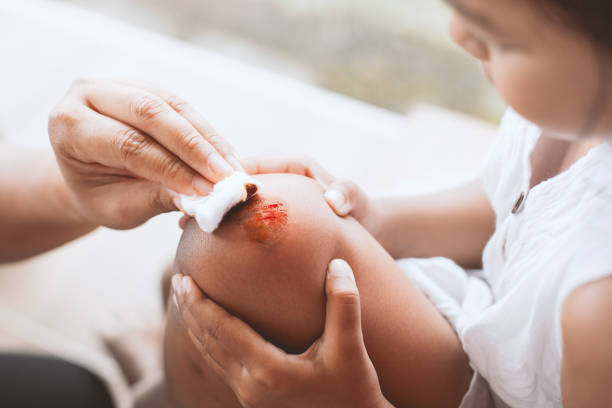July 17, 2023

Are you planning an excursion on a cruise ship or boat trip but worried about
getting seasick? Don't let the anxiety of motion sickness derail your sea-going
adventures. It is possible to employ a number of methods to stay clear of
seasickness, while enjoying your trip in the ocean. In this post we'll look at
seven strategies to avoid getting seasick, allowing you to enjoy the best of
your boating adventures.
Seasickness or motion sickness is a problem that can affect the majority of
people in boats, on ships or various other vessels. The constant motion of the
sea can cause a disruption to the inner ear, which can lead to feelings of
dizziness, nausea, and nausea. However, there is a way to mitigate these
symptoms and keep seasickness from ruining the enjoyment of your cruise.
Learn to recognize seasickness
When the brain is receiving different signals from the eyes and the inner
ear, it can cause seasickness. While on a boat and your eyes are open, you may
be able to be able to see the interior of the vessel but your inner ear detects
the rocking motion of the vessel. Seasickness symptoms are often triggered
because of this sensory conflict. You can minimize your chances of getting
seasick by lessening the conflict between your senses. You can find effective
information all about seasickness at https://puntovita.pl/choroba-morska-czym-jest/ site.
1. Select the Best Position for your Boat
In the boat, where you sit can have an influence on the susceptibility to
seasickness. It is important to choose a position that will minimize the feeling
of movement. The middle of the boat, close to the waterline, tends to be the
most solid location. In addition, being outdoors in fresh air can also help
lessen the severity of effects.
2. Focus on the Horizon
Fixing your gaze on a stationary object, like the horizon can help
recalibrate your brain, and reduce seasickness. If you fix your gaze on a solid
location, you are providing your brain visual cues which match the movement that
your inner ear detects which reduces the amount of sensory conflict.
3. Stay Hydrated and Avoid Alcohol
A healthy diet is essential for keeping your overall health in good shape and
avoiding seasickness. Make sure you drink plenty of water prior to as well as
during your trip to keep hydrated. Drinking alcohol can aggravate motion
sickness symptoms, so be sure to avoid alcohol consumption on board.
4. Consider Over-the-Counter Medications
Seasickness can be prevented by taking prescription medications, such as
antihistamines. The medications reduce the sensory input from the inner ear and
decreasing the brain's confusion. Before taking any medications you must read
the instructions and talk to your physician.
5. Natural cures for seasickness
If you prefer natural remedies There are many solutions that can help ease
seasickness. Ginger, for example, has been utilized for ages to reduce nausea as
well as vomiting. Ginger candies, capsules, or ginger tea can be beneficial in
alleviating the effects of motion sickness. Acupressure and peppermint
wristbands are both well-known remedies to consider as well, are also
effective.
6. Maintain Proper Ventilation
Poorly ventilated or crowded environments can worsen the symptoms of seasickness. Open windows
and spend time in the deck area to ensure that fresh air is circulating
throughout your vessel. Fresh air can help regulate your body's equilibrium and
reduce the likelihood of suffering from motion sickness.
Bottom Line
Seasickness is a deterrent on your boating adventures however, with the proper techniques, you can stop it from spoiling the fun. By choosing the right position on the boat, paying attention to the horizon, keeping hydrated, considering medications or alternatives to medication, and keeping the proper level of airflow, you can drastically reduce your chances of getting seasick. So, don't let motion sickness hold your from taking in the beauty of the ocean!
Posted by: StylishGallery at
07:47 AM
| No Comments
| Add Comment
Post contains 648 words, total size 5 kb.

Insufficient wound care can be an underlying cause for infection. The
infection can cause pain, discomfort and a prolonged healing time. Whether you
would like to discover detailed information about infections, you have to sneak
a peek at https://gliwiceonline.pl/2018072274738/zraniles-sie-brudnym-narzedziem-jak-rozpoznac-zakazenie-rany
site.
The first protection is provided by a thin, acid-based film known as"the acid
mantle. The dynamic barrier is made up of microscopic organisms, known as normal
flora, which prevents pathogens from entering the body.
Prevention
A wound becomes infected when harmful microorganisms, like fungi or bacteria,
enter the wounded area. These microorganisms can be found on the skin, different
parts of the body or even the surroundings. These microorganisms can be found on
objects and materials that help to clean the wound.
The type of the wound, its location, and the manner in which it was created
are all factors that influence the likelihood of getting infected. Studies have
shown that wounds treated with care are at risk of a 1-5% chance of infection;
clean-contaminated wounds suffer from a risk of 3 to 11 percent and dirty or
contaminated wounds have over 27% chance of infection.
Patients with chronic health conditions which affect the body's capability to
fight infections are at higher risk of wound infections. This includes diabetes,
low blood circulation, as well as a weak immune system. The infection can be
caused by wounds that have not been properly cleaned and treated or that develop
itchy. Wound infections are frequently the cause of nosocomial
(hospital-acquired) infected and could lead to long hospital stays with higher
cost and a host of other complications.
The symptoms
If you are injured, the first thing that happens is that your body attempts
to stop the bleeding. Hemostasis is the term for this. It's a good thing. It
permits the blood vessels to expand, which allows for a better blood flow,
oxygen and vitamins to get to the site of wounds in addition to other healing
substances.
The skin is then able to form the crusty dry layer that is known as"scab."
The skin then forms a crusty dry layer called "scab" that serves as a shield,
preventing infections from coming into the. It is possible that the wound will
become infected if the scab fails to disappear or does not form.
Infections that aren't treated right away can spread and cause other
infections in the body. You may also need antibiotics via intravenous or oral
route when the wound is contaminated with dirt or contains foreign substances
like rust. The tetanus vaccination may be required. Medical professionals need
to recognize and treat the tetanus infection as a serious issue. This will help
prevent the rise of antibiotic resistance.
Diagnosis
The infection of the wound could result in pain, discomfort, or even death.
It also slows down healing, and can increase the risk of other complications.
The most at risk for wound infections are those who have medical conditions that
affect their immune system, for example the rheumatoid or diabetes.
There are several methods of identifying the presence of an infection on a
cut by using the evidence-based symptoms or wound cultures. The use of clinical
symptoms and signs leaves doctors without any information regarding the
microorganism(s) that cause the infection. With the rise of antibiotic
resistance and a growing concern for patients, it's important to know which
bacteria are present in the wound.
It is crucial to address wound infection as soon as it is suspected for the
prevention of serious local and systemic complications like sepsis (a
life-threatening condition that includes shock and an illness known as coma).
The affected skin must be cleaned, foreign materials removed and drainage of
pus. To treat and stop the growth of the disease, antibiotics are
recommended.
Treatment
Infections to the wound cause pain, and slows healing of wounds, however, it
is treatable. The wound must be cleaned with soap and warm water. Apply an
antibiotic ointment that is available for purchase without a prescription. Wrap
it in clear bandages. Additionally, it's essential to keep the dressing clean
and replace it every day. It's important to flush the pus in case a tiny pocket
forms. The doctor may recommend oral antibiotics to treat the disease. If you
have a weak immune system, then you may be required to take IV (intravenous)
antibiotics.
Conclusion:
Biofilms are formed by bacteria that adhere to a wound. They adhere to one to form a sticky matrix made up of sugars and proteins. It prevents the immune system from killing them and increases the burden of bacterial growth in the wound, thereby impairing the healing process.
Posted by: StylishGallery at
05:13 AM
| No Comments
| Add Comment
Post contains 773 words, total size 5 kb.
32 queries taking 0.0437 seconds, 75 records returned.
Powered by Minx 1.1.6c-pink.









